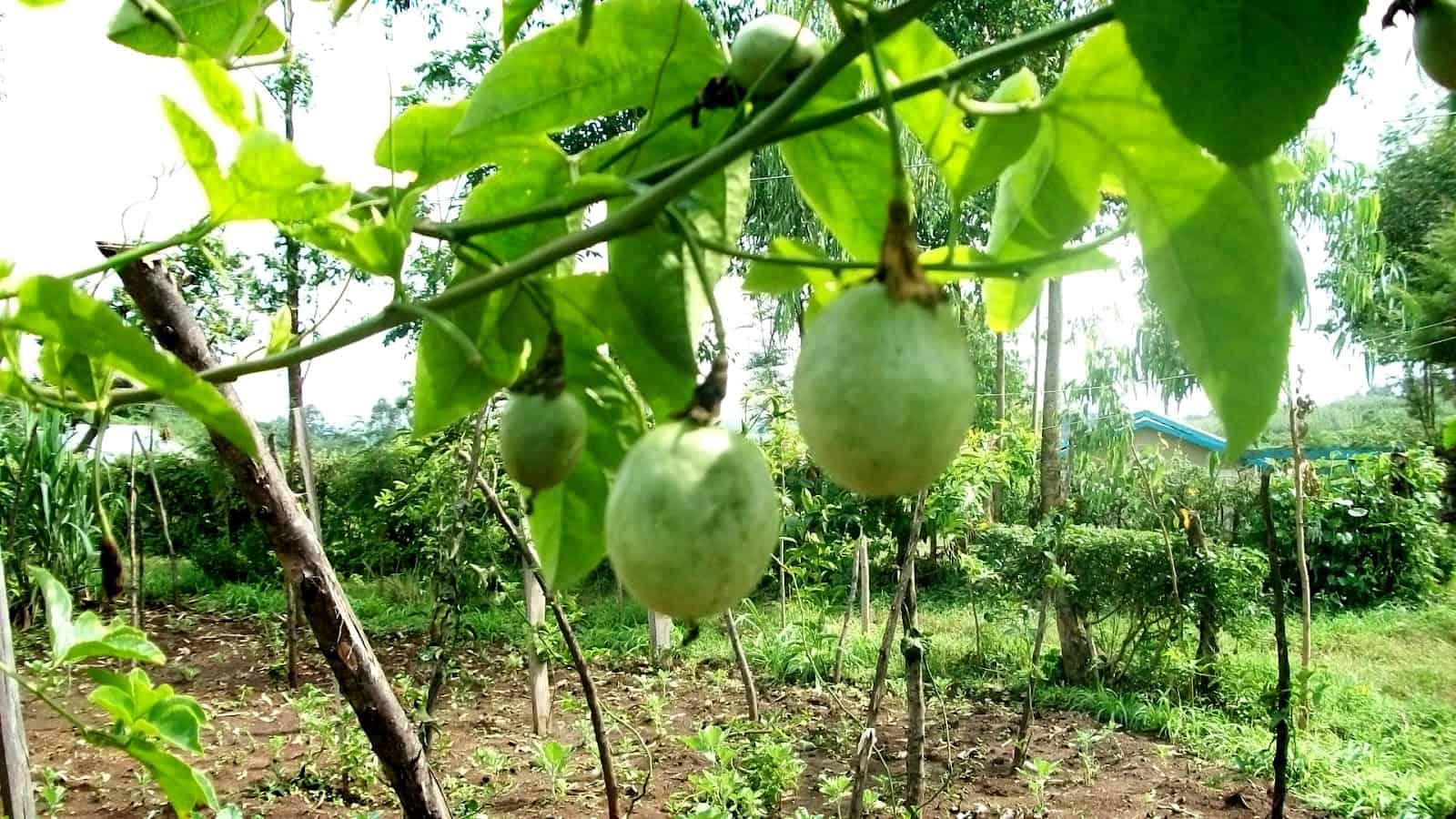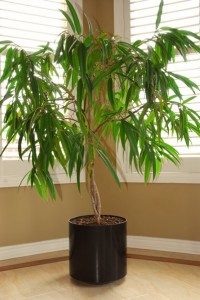Let’s face it:
Anyone can start a passion fruit-growing venture.
But not everyone gets past the first roadblocks.
It’s disappointing when you don’t seem to get the results you’re being hyped about, and when you’re disappointed, you become less and less enthused about keeping at it.
It helps to know that you’re not alone:
Like personal problems, passion fruit growing problems are widespread. There are so many Agribusiness entrepreneurs and gardeners out there, but very few succeed. Only 2% of the lot get meaningful returns on their investment.
When they do, it’s through sheer hard work and determination, plus tips from the pros, of course.
To help you join the 2%, here are:
8 Common problems with growing passion fruits and how to overcome them
Most of the problems you face in your orchard, some of them listed here, can be attributed to poor vine nutrition.
Just like us, without proper nutrition, our bodies might not be able to fight diseases – exposing us to a myriad of problems.
It’s not different with plants.
Solve your plant nutrition puzzle and more than half of the problems are solved.
It’s more or less like arming your plants so that when a problem arises, they can fight for themselves.
Now, having explained what to do when problems arise, let’s call them one by one.
Get your copy of the Passion Fruit Farming Course Book, which provides step-by-step guidelines on growing passion fruit for massive profits.
1. Passion fruit vine produces fruit, but there is no juice, just soft seeds inside
There are several reasons why passion fruits may lack the necessary juice.
In this case, the vine might not have received enough water or nutrients during the growing period.
Passion fruits are very hungry and thirsty, so regular feeding and watering to keep the soil moist are key. Failure to provide these basic requirements could lead to fruit formation that lacks juice content.
Similarly, most passion fruit vines start producing meaningful fruits in their second year, especially under relatively colder conditions.
Therefore, getting the fruit quite early may also have an effect on the form as well.
2. The vines keep flowering but never set fruits


This can happen due to a number of reasons.
The most common ones are poor pollination due to too high or too low temperature (optimum 20 – 35 degrees) or too much rain, boron deficiency, and extended periods of gloomy weather or fog.
In some instances, the flowers may also drop off prematurely as a result of poor plant nutrition.
3. Fruits keep dropping off the vine
That could be a result of irregular watering. It could also result from fungal infection, fruit fly, or severe mite damage.
Fruit can also drop if the weather suddenly turns cold or the plant lacks water. Pest insects, such as passion fruit vine hoppers, feeding on the vine can also cause fruit drop. Watch out for these insects while they are young.
Check and correct accordingly.
The other common reason passion fruit drops its fruits is that they lack trace elements. The plant doesn’t have the resources to support fruit production, so it drops the fruits to conserve energy for the main plant.
You can buy trace element supplements and feed your vines accordingly since passion fruit needs a lot of feeding.
4. The leaves of the vines turn yellow (chlorosis)


Passion fruit vine leaves yellowing (chlorosis)
It could be a sign that your vines have been infected by passion fruit woodiness virus.
Secondly, it could result from Magnesium deficiency, Nitrogen deficiency on sandy soil, or extremely cold weather combined with low humidity.
The vines turning yellow due to nutrient deficiency manifests itself differently depending on the stage of the leaves’ growth.
For instance, if the new leaves of your vines have yellow veins, a deficiency in Sulphur (S) or Copper is usually evident.
However, if the yellowing affects areas between the veins, it is an indication of a lack of sufficient Iron (Fe) or Molybdenum (Mo).
Yellowing of the older leaves, especially between the veins, is a sign of a magnesium deficiency. A fertilizer rich in Magnesium (Mg) is an appropriate remedy for this problem.
On the other hand, the yellowing of veins in older leaves is a guaranteed sign of Nitrogen deficiency and should be corrected accordingly.
There are scenarios where old and new leaves of your passion fruit vines turn yellow.
In such cases, a lack of Zinc (Zn) is to blame.
Next time you experience yellowing of your vines, you’ll be able to diagnose the root cause and make the necessary corrections.
5. Passion fruit vine leaves turning yellow and crinkling


Passion fruit leaves turning yellow and crinkling
The symptoms of yellowing and crinkling of the leaves on your passionfruit vine indicate the Passionfruit woodiness virus.
Affected fruit can be small and deformed, with an abnormally thick, hard rind and small pulp cavity. Aphids carry this disease, and most vines will be affected at some point.
Ensure that your vine is planted in a warm, sheltered spot to help reduce the incidence of this disease.
Symptoms can appear under stress in cool weather or lacking water or nutrients.
Affected vines cannot be cured; however, symptoms are temporary, and vines can recover once the stresses are alleviated.
I am sure once you give your vine the warmth, moisture, and nutrients it requires, it will soon recover and give you lots of delicious summer fruit.
6. Fruits are bumpy or malformed


Bumpy passion fruits
Passion fruit woodiness virus could be the culprit, especially if leaves are yellow and mottled.
It could also happen because of Boron deficiency or insect damage, particularly in fruit flies.
In the case of the passion fruit woodiness virus, the fruits appear deformed, hard, and bumpy.
Once you notice these symptoms in your orchard, getting rid of the affected plants and spraying against aphids that transmit the virus is better.
7. Shrivelled fruits


Passion fruits shriveling before maturity
Shrivelling is normal for passion fruits, especially after dropping them on the ground when they are mature.
However, if this happens earlier, it could be caused by fruit fly damage, sucking bug damage, poor pollination, boron deficiency, and insufficient irrigation when a heavy crop is set.
Ensure that you give your vines appropriate nutrients for optimum and vigorous growth while watching out for pests and diseases.
If you do this, your fruits will do just fine!
8. Spots on the fruits and leaves


Spots on the fruits
Mostly caused by Brown Spot (Altanaria passiflora) but can also be caused by Septoria spot.
Brown spot is a serious fungous disease that affects leaves, stems, and fruit. The notable symptoms on leaves include small brown spots appearing first.
These enlarge, develop a lighter-colored central area, and become irregular or angular in shape.
On stems, elongated dark-brown lesions appear, usually near leaf axils or where stems have rubbed against the supporting wire.
The infection spreads from these points, and whenever the stem becomes completely girdled, the shoot suddenly wilts, and fruits collapse.
On fruit, spots first appear as pinpricks, which enlarge into sunken circular lesions with brownish centers. Eventually, the rind around the diseased area becomes wrinkled, and the fruits shrivel and drop.
Bonus Update: Die Backs and Passion Fruit Woodiness Virus (PFWV)
Over the recent past, the cases of die-backs and PFWV have increased. What’s more scary is the fact these are probably the most damaging passion fruit diseases by far.
Die-backs, for instance, are caused by Fusarium spp. present in the soil. The symptoms start off mildly with pale green leaves, leaf drops, and death, causing over 50% loss.
The only way to combat this problem is to ensure grafting is done on resistant yellow rootstalk.
PFWV, on the other hand, manifests itself with smaller, crinkly-looking younger leaves that look nothing like the rest of the plant.
If you suspect, that your vines are infected with the passion fruit woodiness virus, the best course of action is to uproot and discard the affected plants as soon as possible.
Above all, close monitoring and scouting will help you to identify and take corrective measures before the situation gets out of hand.
Conclusion
You’ve just read 8 common problems with growing passion fruits. Knowing what to do when they strike will give you enough confidence to forge forward.
The nice thing about farming or gardening is that you’re in total control of how successful you are.
If you slack off, so will your results.
If you let small obstacles and problems get in your way, it’s game over. If you get totally into what you’re doing and crush it, the sky’s the limit.
You can start taking control right now by claiming your free sample of the passion fruit farming course by clicking here (if you haven’t) or purchasing the full course by clicking here.
Editor’s Note: This post was originally published on July 2, 2017, and has been revamped and updated for accuracy, grammar, and comprehensiveness


